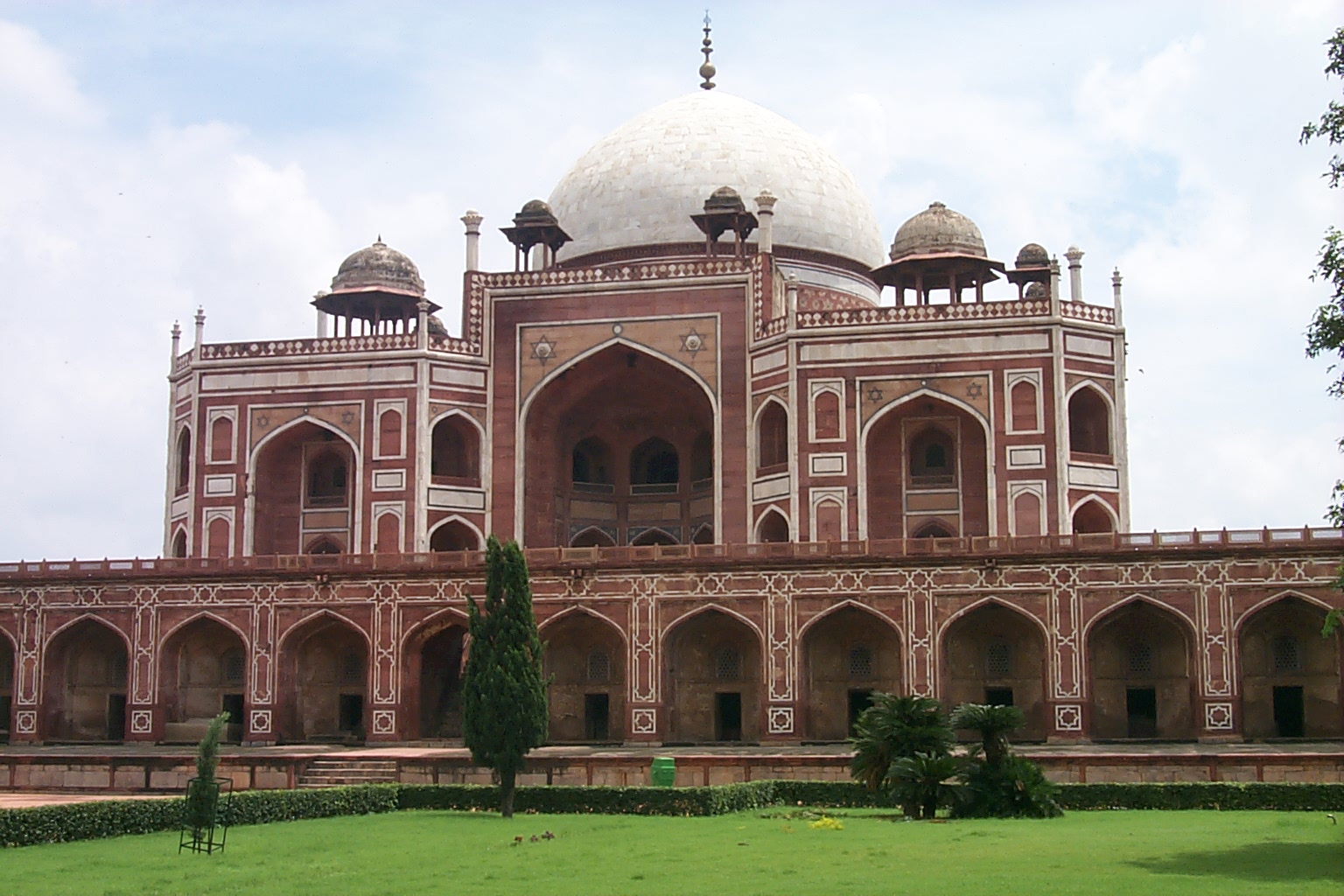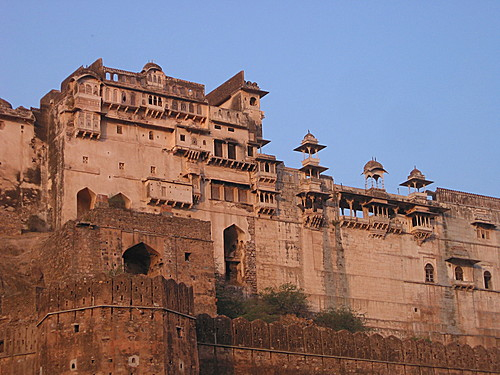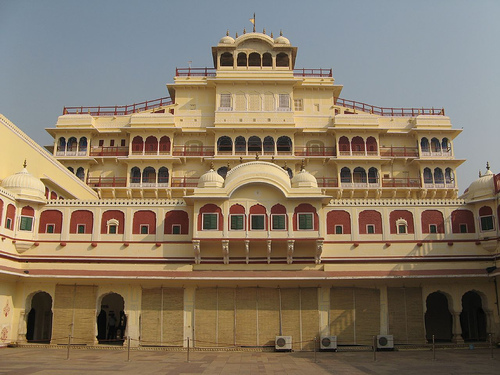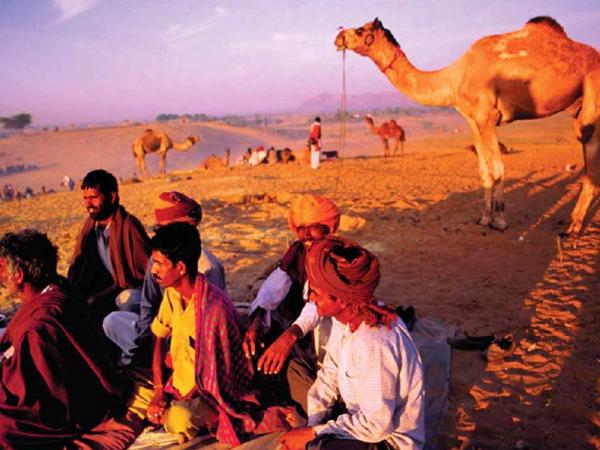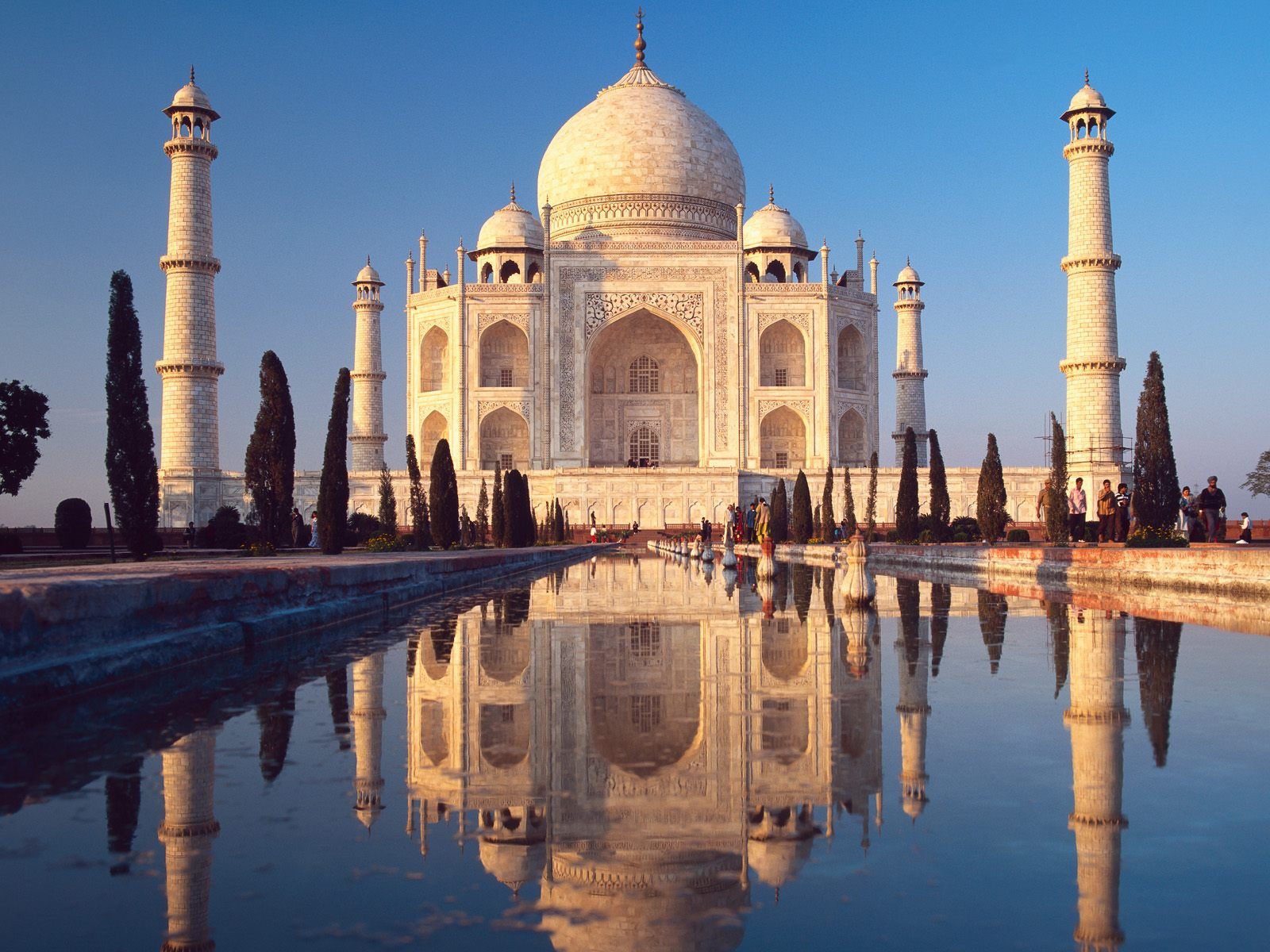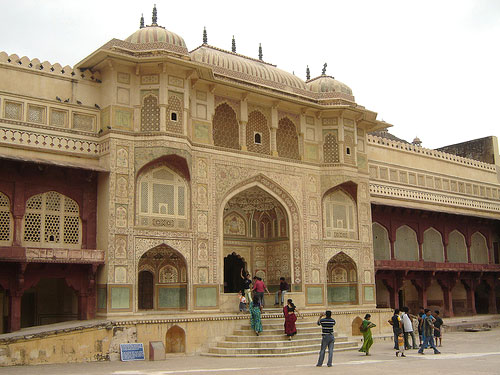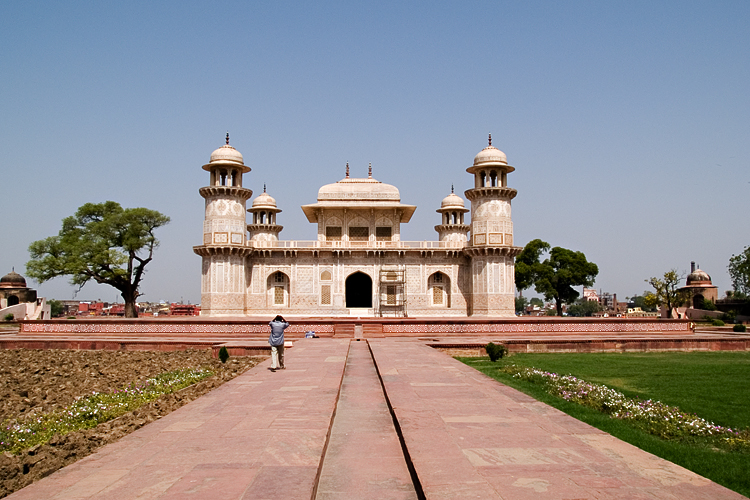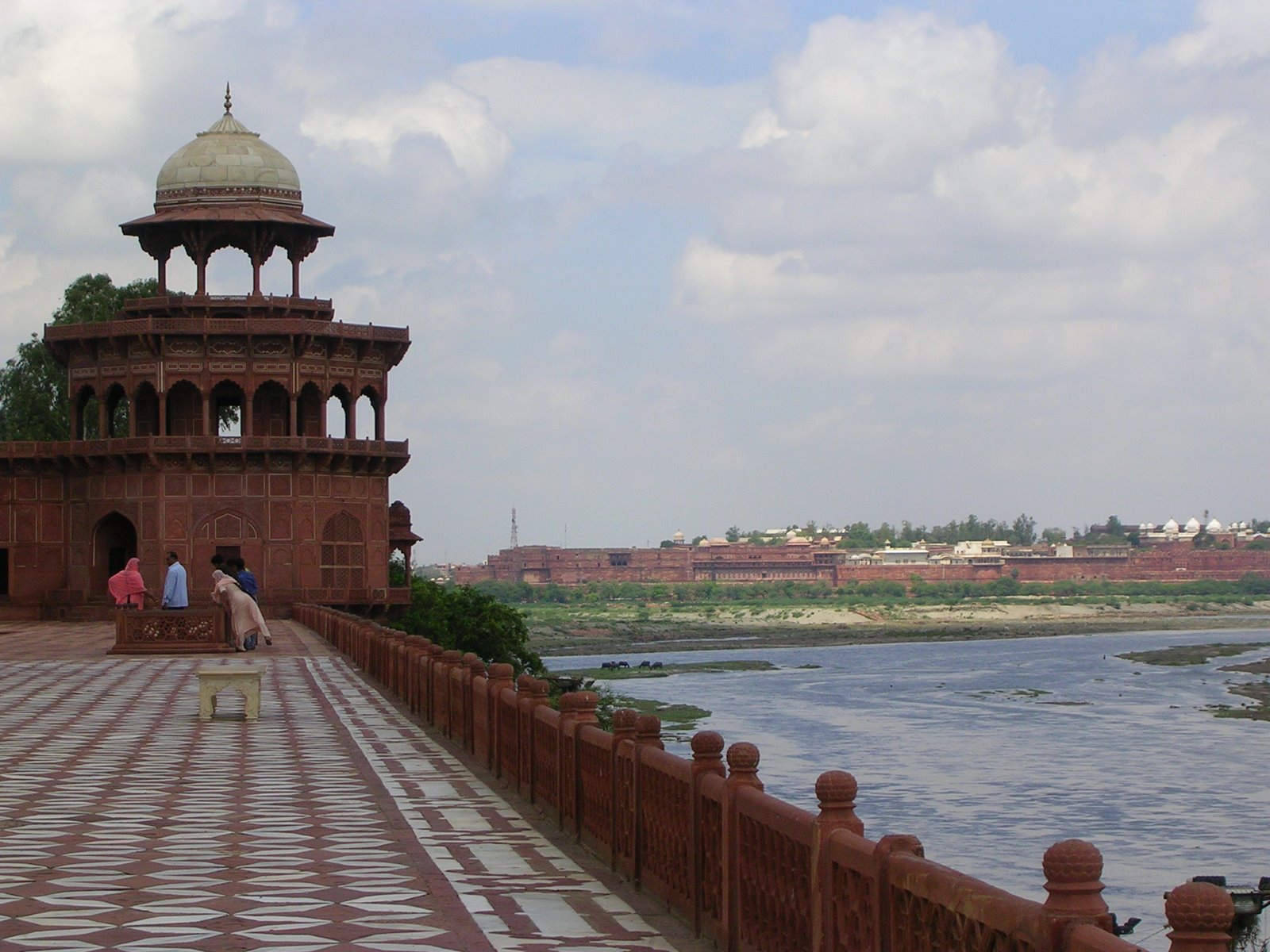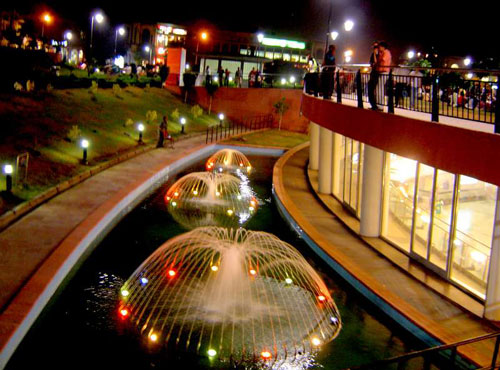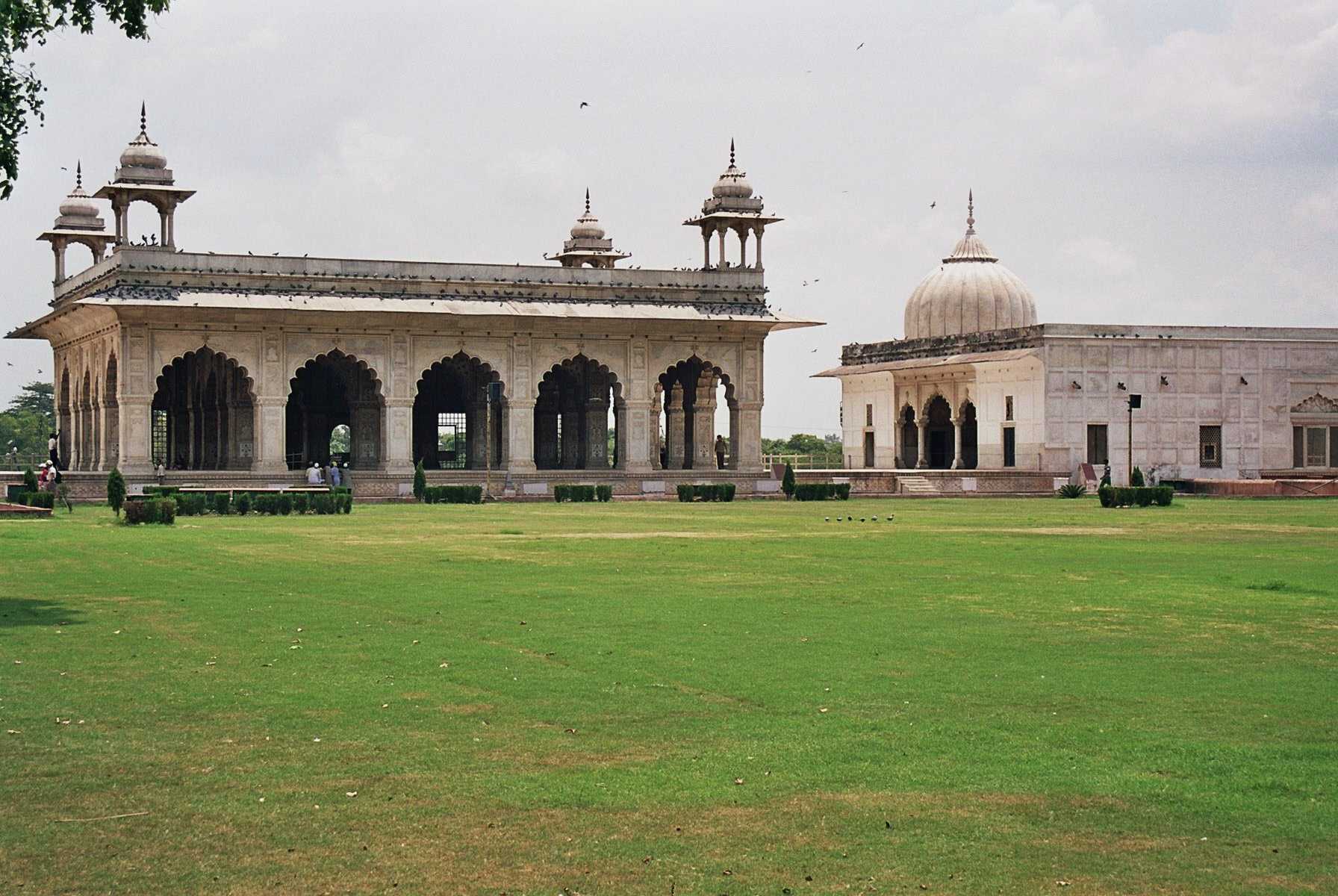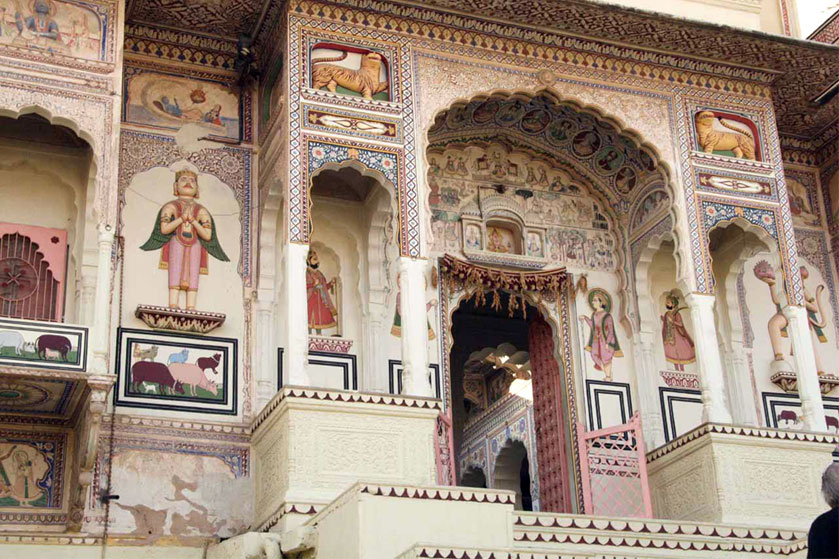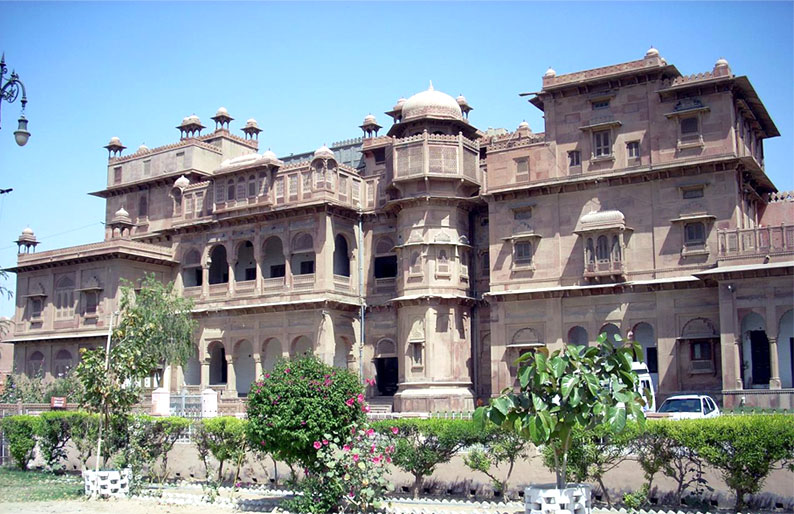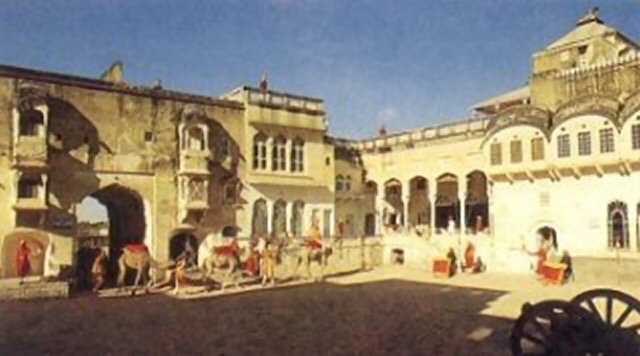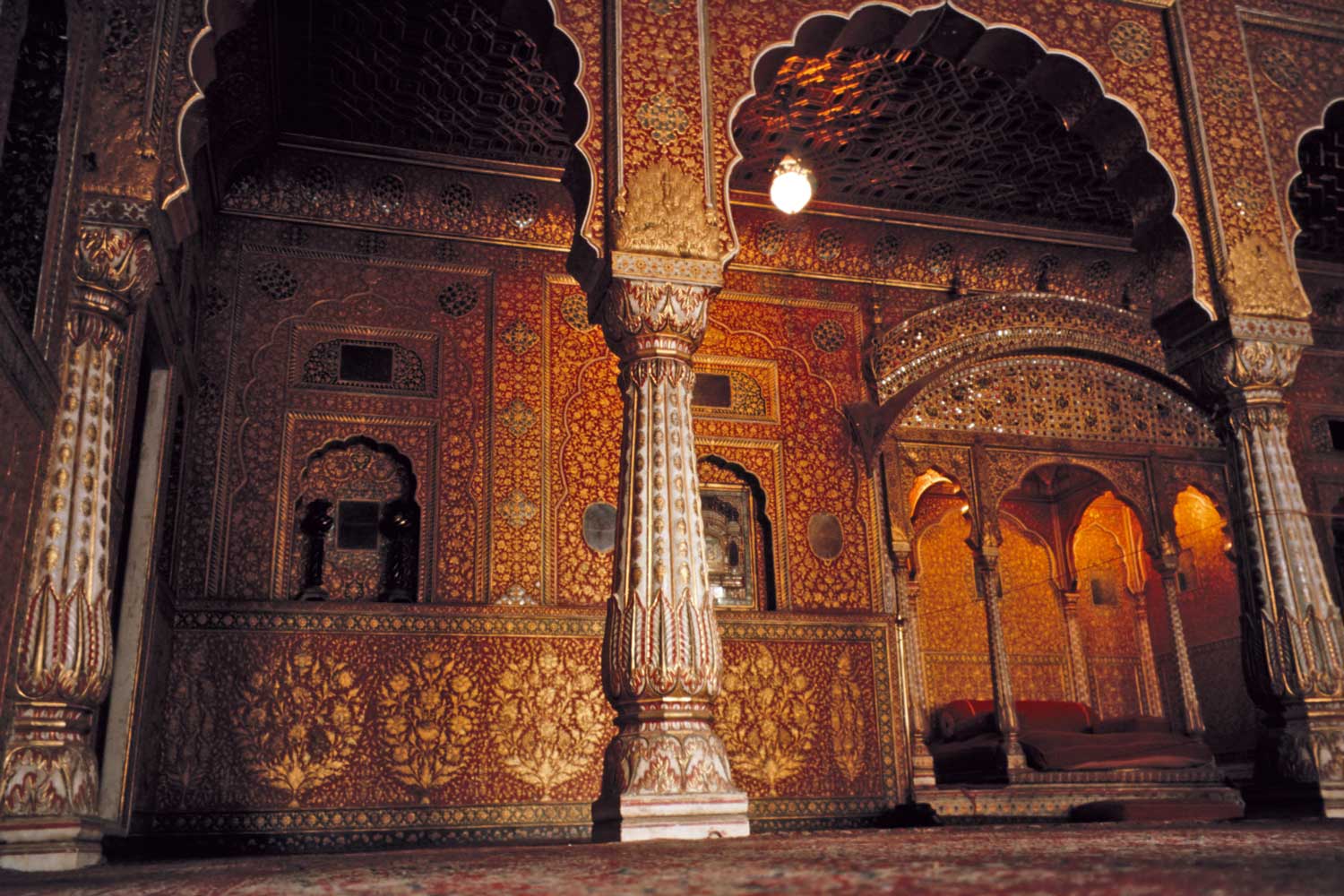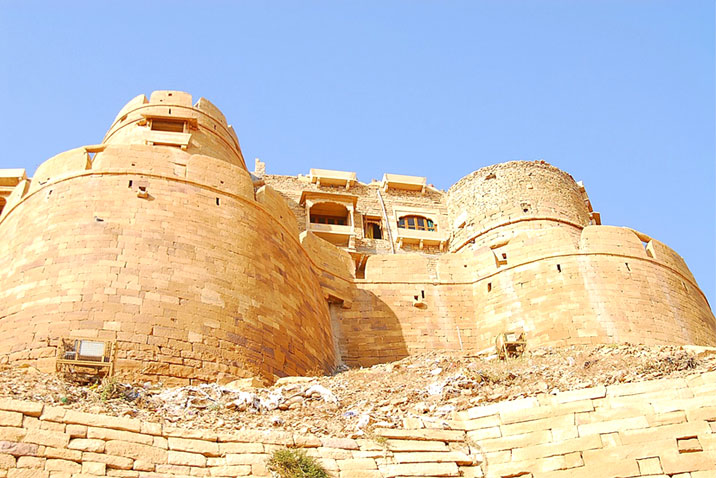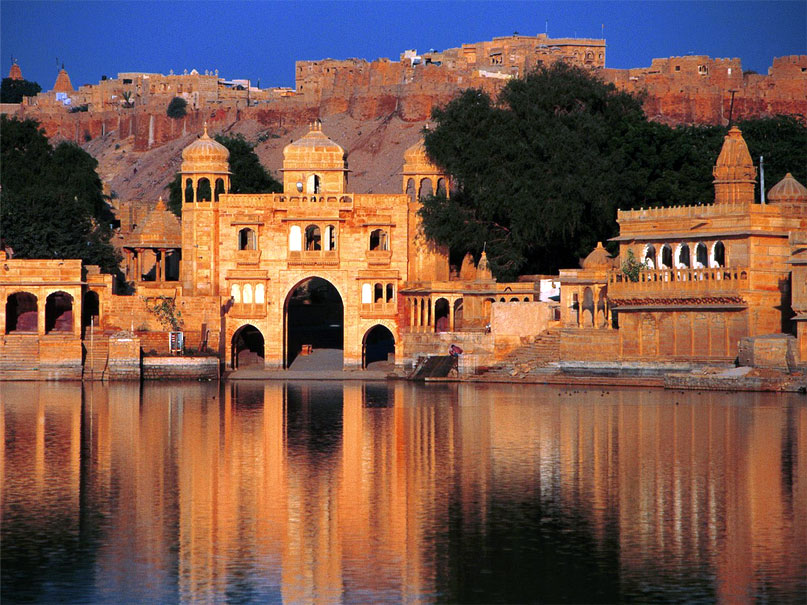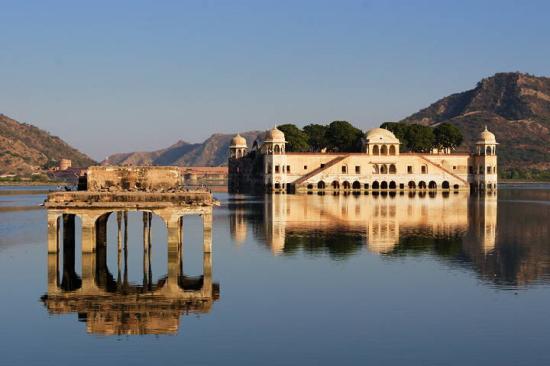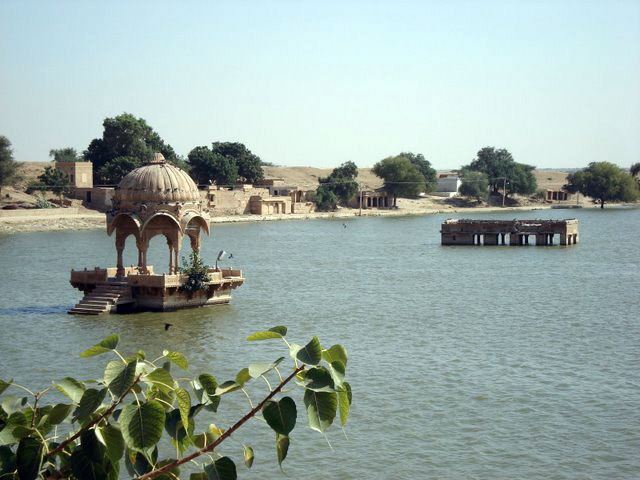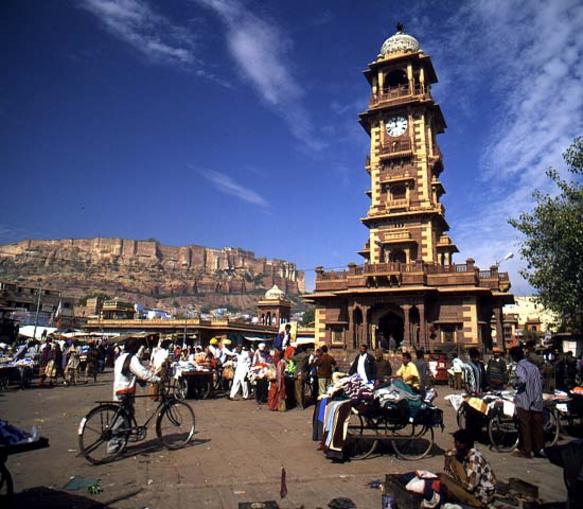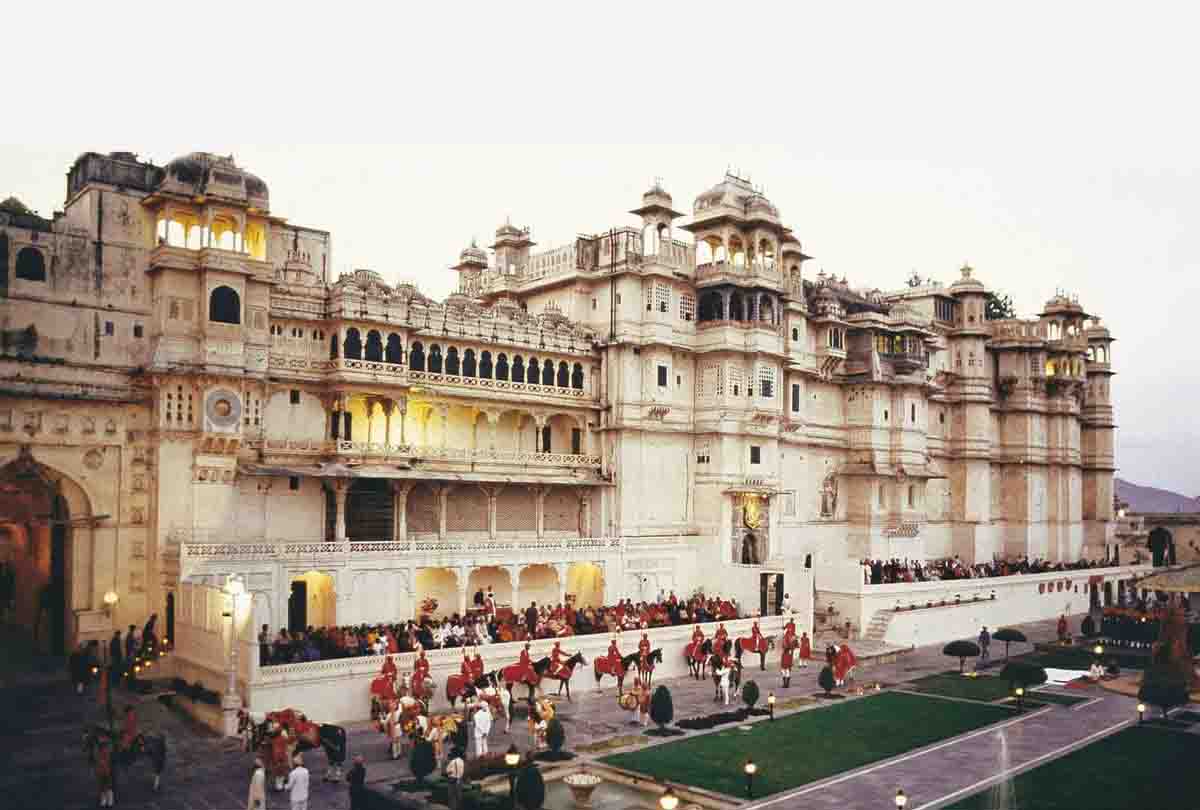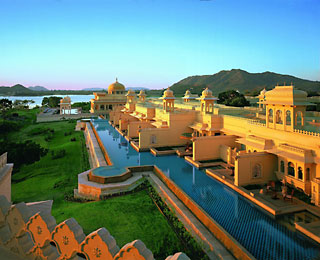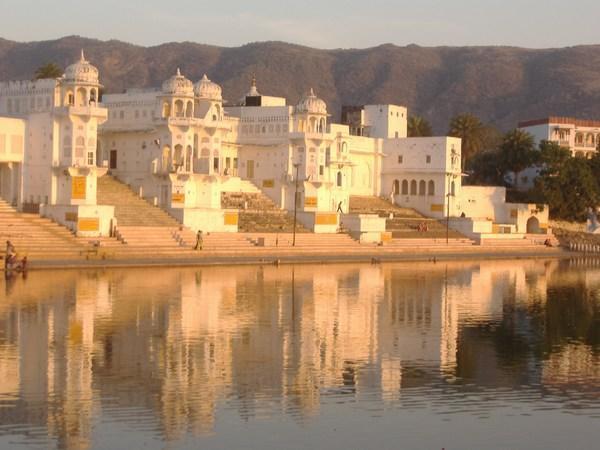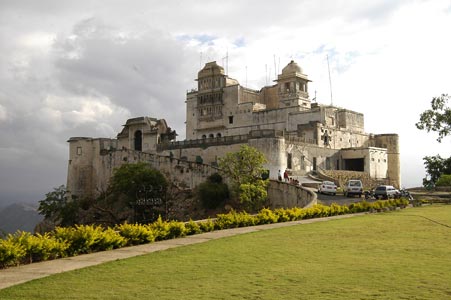Delhi-Bikaner-Jaisalmer-Jodhpur-Udaipur-Pushkar-Jaipur-Agra-Delhi.
The enchanting Rajasthan tour will not only enchant you but mesmerize you with the forts and palaces it has to offer, leave you awestruck with the hues of colours shown of the Taj and finally take you to a different world altogether of camels. The famous Pushkar fair is the celebration of the ship of the desert the camel. Camels decorated with flowers and colourful clothes, camesl of various sizes and colours, and camels in different moods and variations.
Come enjoy Rajasthan and take a dip into the celebrations for the ship of the desert.
Day 1: Delhi
 Arrive ar Delhi.Our representative will welcome and transfer to the hotel.Overnight stay at hotel.
Arrive ar Delhi.Our representative will welcome and transfer to the hotel.Overnight stay at hotel.
Day 2: Delhi - Mandawa
 Morning after breakfast go for sightseeing of Delhi.Delhi has remained the capital seat for many centuries in the past and most of the rulers have left behind their impressions on the city by developing various gardens, building many tombs and forts and palaces.All the buildings carry their own seperate architectural characteristic which has given Delhi a different face more than that of any other metropolis in India.There are some forts and monuments for the sightseeing of the city. Tomb built by the wife of Humayun, Haji Begum in the mid 16th century, this red sand stone structure is considered to be the predecessor of Taj Mahal. The structure is one of the best example of Mughal Architecture. Humayun's wife is also buried in the red and white sandstone, black and yellow marble tomb. The entry in the complex is free on Fridays.
Morning after breakfast go for sightseeing of Delhi.Delhi has remained the capital seat for many centuries in the past and most of the rulers have left behind their impressions on the city by developing various gardens, building many tombs and forts and palaces.All the buildings carry their own seperate architectural characteristic which has given Delhi a different face more than that of any other metropolis in India.There are some forts and monuments for the sightseeing of the city. Tomb built by the wife of Humayun, Haji Begum in the mid 16th century, this red sand stone structure is considered to be the predecessor of Taj Mahal. The structure is one of the best example of Mughal Architecture. Humayun's wife is also buried in the red and white sandstone, black and yellow marble tomb. The entry in the complex is free on Fridays.
Old Fort It is believed that the Pandavas had built their capital, Indraprastha at the place where the old fort stands today. This fort, now in ruins, was the seat for administration for many emperors. The legendary Prithviraj Chauhan ruled from here till he was defeated by Abdali in the battle of Panipat. A new light & sound show is held by the Department of Delhi Tourism every evening. Timings and Tickets are available from the tourist office.
Safdarjung Tomb The Safdarjang tomb is besides the of Safdarjang airport. This tomb was built by the Nawab of Avadh for his father. The structure is one of the finest example of architecture of its time and tells a saga of the last remnants of a dying empire.
Jantar Mantar Few minutes walk from Connaught Place is is a strange collection of solomon coloured structures. These were built by Maharaja Jai Singh and is actually an observatory. Though not as large as its compatriot in Jaipur Jantar Mantar at Delhi also an attraction for the tourists. The astonishing part of these observatories is that they can calculate many astronomical movements very accurately.
<a class="PIInfosoft-placeName" onclick="openAttractionDescriptionPopup('en', 'A7J','DEL','IND','India');" data-target="#PopUp5" href="javascript:void(0)" data-toggle="modal">Red Fort</a> Built in Red Sand stone this imposing fort is 3 kms in perimeter with the height of the wall varying from 18 to 30 meters at places. When the <a class="PIInfosoft-placeName" onclick="openAttractionDescriptionPopup('en', 'A7J','DEL','IND','India');" data-target="#PopUp5" href="javascript:void(0)" data-toggle="modal">Red Fort</a> was being built Yamuna used to flow on its one sides and there were deep moats on the other. Today Yamuna flows almost a kilometer away from the fort and the moats have dried up. In the evening the Delhi Tourism organises a light and sound show which narrates the history of Delhi in context of the <a class="PIInfosoft-placeName" onclick="openAttractionDescriptionPopup('en', 'A7J','DEL','IND','India');" data-target="#PopUp5" href="javascript:void(0)" data-toggle="modal">Red Fort</a>.
The Lahore gate, the main entrance, has some emotions and sentiments attached with the Indian independence as the Tricolour flutters on the top of this gate. On 15th August the Indian Prime minister addresses the nation from here. As soon one enters in the fort from the Lahore gate There is a small Bazzar, here all kinds of items are available. This Shopping arcade was known as the Mina Bazzar and was open only to women on Thursdays's during the Mughal era.
The arcade leads to the Naubat Khana or the drum house where the Musicians used to play drums on the arrival of Emperors or princes. Just above the Naubat Khana is the Indian war memorial museum which has a rich collection of armours, guns, swords, and other items related to war.
The Dewan-i-Am or the place of public hearing had a wall paneled with marble in laid with precious stone which were removed during the mutiny of 1857. The Dewan-i-Khas or the place for special hearing was the area where the emperor used to hold meetings with his ministers. Next to Dewan-i-Khas are the royal baths or the Hammams and Shahi Burj which are closed for public viewing. The white marbled Moti Masjid or the pearl mosque was the private mosque for Aurangzeb.
Qutab Minar In 1199, Qutbuddin raised the Qutab Minar either as a victory tower or as a minaret to the adjacent mosque. From a base of 14.32 mtrs. it tapers to 2.75 mtrs. at a height of 72.5 mtrs. It is still the highest stone tower in India, one of the finest stone tower in India, one of the finest Islamic structures ever raised and Delhi's recognised landmark. It was completed by the Sultan's successor and son-in-law, Iltutmish. The tomb of Iltutmish, which he himself built in 1235, is nearby, Its interiors are profusely decorated with calligraphy, though the dome has collapsed. The iron Ashoka pillar standing besides belongs to the early 5th century and has withstood all the rains and dust without any rust.
Afternoon proceed to Mandawa, an important town in the Shekhavari region of Rajasthan.Upon arrival, check-in and overnight stay at hotel.
Day 3: Mandawa
 Morning after breakfast transfer to visit the beautiful havelis and the frescoes on them.Mandawa is a small town in the heart of Shekhawati region. The place is known not only for its havelis but also for its Fort Palace. The structure of the palace reminds of the cultural and social importance of this region in the past. Of the havelis, the most important are the Chokhani, Ladia, Binsidhar Newatia, and Gulab Rai Ladia Haveli. Another haveli, the Binsidhar Newatia Haveli, is known for its curious paintings. There is a painting of a boy holding a telephone and a European woman in a car driven by a chauffeur. The Gulab Rai Ladia Haveli is famous for its erotic images, now mostly defaced The beautiful frescoes are more than 500 years old. You may take a camel ride to the nearby villages. Later transfer to Bikaner. One of the most important cities of the state of Rajasthan Bikaner was one of the most important destinations for the travelers on the Silk route.Upon arrival check-in at hotel for overnight stay.
Morning after breakfast transfer to visit the beautiful havelis and the frescoes on them.Mandawa is a small town in the heart of Shekhawati region. The place is known not only for its havelis but also for its Fort Palace. The structure of the palace reminds of the cultural and social importance of this region in the past. Of the havelis, the most important are the Chokhani, Ladia, Binsidhar Newatia, and Gulab Rai Ladia Haveli. Another haveli, the Binsidhar Newatia Haveli, is known for its curious paintings. There is a painting of a boy holding a telephone and a European woman in a car driven by a chauffeur. The Gulab Rai Ladia Haveli is famous for its erotic images, now mostly defaced The beautiful frescoes are more than 500 years old. You may take a camel ride to the nearby villages. Later transfer to Bikaner. One of the most important cities of the state of Rajasthan Bikaner was one of the most important destinations for the travelers on the Silk route.Upon arrival check-in at hotel for overnight stay.
Day 4: Mandawa - Bikaner
 Post breakfast in the morning transfer for sightseeing of the <a class="PIInfosoft-placeName" onclick="openAttractionDescriptionPopup('en', 'A2S','BKN','IND','India');" data-target="#PopUp5" href="javascript:void(0)" data-toggle="modal">Junagarh Fort</a>.<a class="PIInfosoft-placeName" onclick="openAttractionDescriptionPopup('en', 'A2S','BKN','IND','India');" data-target="#PopUp5" href="javascript:void(0)" data-toggle="modal">Junagarh Fort</a> is a fort in the city of Bikaner, Rajasthan, India. The fort was originally called Chintamani and was renamed Junagarh or "Old Fort" in the early 20th century when the ruling family moved to <a class="PIInfosoft-placeName" onclick="openAttractionDescriptionPopup('en', 'A2T','BKN','IND','India');" data-target="#PopUp5" href="javascript:void(0)" data-toggle="modal">Lalgarh Palace</a> outside the fort limits. It is one of the few major forts in Rajasthan which is not built on a hilltop. The modern city of Bikaner has developed around the fort.
Post breakfast in the morning transfer for sightseeing of the <a class="PIInfosoft-placeName" onclick="openAttractionDescriptionPopup('en', 'A2S','BKN','IND','India');" data-target="#PopUp5" href="javascript:void(0)" data-toggle="modal">Junagarh Fort</a>.<a class="PIInfosoft-placeName" onclick="openAttractionDescriptionPopup('en', 'A2S','BKN','IND','India');" data-target="#PopUp5" href="javascript:void(0)" data-toggle="modal">Junagarh Fort</a> is a fort in the city of Bikaner, Rajasthan, India. The fort was originally called Chintamani and was renamed Junagarh or "Old Fort" in the early 20th century when the ruling family moved to <a class="PIInfosoft-placeName" onclick="openAttractionDescriptionPopup('en', 'A2T','BKN','IND','India');" data-target="#PopUp5" href="javascript:void(0)" data-toggle="modal">Lalgarh Palace</a> outside the fort limits. It is one of the few major forts in Rajasthan which is not built on a hilltop. The modern city of Bikaner has developed around the fort.
The fort complex was built under the supervision of Karan Chand, the Prime Minister of Raja Rai Singh, the sixth ruler of Bikaner, who ruled from 1571 to 1611 AD. Construction of the walls and associated moat commenced in 1589 and was completed in 1594. It was built outside the original fort of the city, about 1.5 kilometres (0.93 mi) from the city centre. Some remnants of the old fort are preserved near the Lakshmi Narayan temple.
Historical records reveal that despite the repeated attacks by enemies to capture the fort, it was not taken, except for a lone one-day occupation by Kamran Mirza. Kamran was the second son of the Mughal Emperor Babur who attacked Bikaner in 1534, which was then ruled by Rao Jait Singh. In the battle, the Mughals were defeated by Rathors. Kamran then returned to Lahore.
The 5.28 hectares large fort precinct is studded with palaces, temples and pavilions.These buildings depict a composite culture, manifest in the mix of architectural styles. Later on proceed to the border town of Jaisalmer.Jaisalmer is the last prominent town on the India - Pakistan border. Famous for sand dunes and the yellow sand found there, Jaisalmer is the place to relax and enjoy the desert life over here.Upon arrival check-in for overnight stay at hotel.
Day 5: Bikaner
 Post breakfast in the morning, a full day sightseeing of the city, with a visit to the massive fort.<a class="PIInfosoft-placeName" onclick="openAttractionDescriptionPopup('en', 'AY2','JSA','IND','India');" data-target="#PopUp5" href="javascript:void(0)" data-toggle="modal">Jaisalmer Fort</a> is one of the largest forts in the world. It is situated in Jaisalmer city in the Indian state of Rajasthan. It was built in 1156 AD by the Bhati Rajput ruler Rawal Jaisal, from where it derives it name. The fort stands proudly amidst the golden stretches of the great Thar Desert, on Trikuta Hill, and has been the scene of many battles. Its massive yellow sandstone walls are a tawny lion color during the day, fading to honey-gold as the sun sets, thereby camouflaging the fort in the yellow desert. For this reason, it is also known as the "Golden Fort". The huge fort built with yellow sandstone towers over the city and the glazes from far across, hence has gained the name of the Golden fortress.After visiting the golden fortress take a camel ride on the sand dunes. Later back to hotel. Enjoy the folk dances with typical cuisine of Rajasthan. Overnight stay at hotel.
Post breakfast in the morning, a full day sightseeing of the city, with a visit to the massive fort.<a class="PIInfosoft-placeName" onclick="openAttractionDescriptionPopup('en', 'AY2','JSA','IND','India');" data-target="#PopUp5" href="javascript:void(0)" data-toggle="modal">Jaisalmer Fort</a> is one of the largest forts in the world. It is situated in Jaisalmer city in the Indian state of Rajasthan. It was built in 1156 AD by the Bhati Rajput ruler Rawal Jaisal, from where it derives it name. The fort stands proudly amidst the golden stretches of the great Thar Desert, on Trikuta Hill, and has been the scene of many battles. Its massive yellow sandstone walls are a tawny lion color during the day, fading to honey-gold as the sun sets, thereby camouflaging the fort in the yellow desert. For this reason, it is also known as the "Golden Fort". The huge fort built with yellow sandstone towers over the city and the glazes from far across, hence has gained the name of the Golden fortress.After visiting the golden fortress take a camel ride on the sand dunes. Later back to hotel. Enjoy the folk dances with typical cuisine of Rajasthan. Overnight stay at hotel.
Day 6: Bikaner - Jaisalmer
 After a sunptuous breakfast transfer to Jodhpur, another erstwhile princley state of old Rajasthan. Jodhpur is one of the major producer of crop and cattle in the state of Rajasthan. It is also the second largest city of Rajasthan.
After a sunptuous breakfast transfer to Jodhpur, another erstwhile princley state of old Rajasthan. Jodhpur is one of the major producer of crop and cattle in the state of Rajasthan. It is also the second largest city of Rajasthan.
Upon arrival check in at hotel and rest.Later transfer to visit the impeccable Meherangarh fort built by the rajputs.Mehrangarh Fort, located in Jodhpur city in Rajasthan state is one of the largest forts in India.
The fort is situated on a lofty height, 400 feet (122 m) above the city, and is enclosed by imposing thick walls. Inside its boundaries there are several palaces, which are known for their intricate carvings and sprawling courtyards. A meandering road leads to and from the city below. Battle scars of cannon ball hits by attacking armies of Jaipur can still be seen on the second gate. To the left of the fort is the chhatri of Kirat Singh Soda, a soldier who fell on the spot defending the Mehrangarh fort.
There are seven gates, which include Jayapol meaning victory built by Maharaja Man Singh to commemorate his victories over Jaipur and Bikaner armies. Fattehpol also meaning victory gate was built by Maharaja Ajit Singh to mark the defeat of Mughals. The palm imprints still attract devotional attention and are covered by vermilion paste and paper-thin silver foil.
The museum in the Mehrangarh fort is one of the finest museums in Rajasthan and certainly the best laid out. In the palanquin section of the fort museum, you can see an interesting collection of old royal palanquins including the elaborate domed gilt Mahadol palanquin, which was won in a battle from the Governor of Gujarat in 1730. The museum exhibits the heritage of the Rathores in arms, costumes, paintings and decorated period rooms.
Also visit the marble cenatophs of Jaswant Singh, known as the <a class="PIInfosoft-placeName" onclick="openAttractionDescriptionPopup('en', 'AP4','JDH','IND','India');" data-target="#PopUp5" href="javascript:void(0)" data-toggle="modal">Jaswant Thada</a>.Overnight stay at hotel.
Day 7: Jaisalmer
 In the morning after breakfast While going to Udaipur take a stop at Ranakpur.Ranakpur is located in the mountain ranges of Pali district, 23 kms. away from the Phalna railway station. Ranakpur is reached after passing lush green valleys and streams and the heart capturing views drive away any fatigue of the journey. The Ranakpur Jain Temple were built during the reign of the liberal and gifted monarch Rana Kumbha in the 15th century. An enormous basement covers 48,000 sq. feet area. There are four subsidiary shrines, twenty four pillared halls and eligibly domes supported by over four hundred columns.
In the morning after breakfast While going to Udaipur take a stop at Ranakpur.Ranakpur is located in the mountain ranges of Pali district, 23 kms. away from the Phalna railway station. Ranakpur is reached after passing lush green valleys and streams and the heart capturing views drive away any fatigue of the journey. The Ranakpur Jain Temple were built during the reign of the liberal and gifted monarch Rana Kumbha in the 15th century. An enormous basement covers 48,000 sq. feet area. There are four subsidiary shrines, twenty four pillared halls and eligibly domes supported by over four hundred columns.
The total number of columns is 1,444 all of which are intricately carved no two being alike. The artistically carved nymphs playing the flute in various dance postures at a height of 45 feet are an engrossing sight. In the assembly hall, there are two big bells weighing 108 kgs. whose sound echoes in the entire complex. This small little township has the some of the most beautiful temples in marble dedicated to Jain faith.Later proceed to the city of <a class="PIInfosoft-placeName" onclick="openAttractionDescriptionPopup('en', 'ATN','UDR','IND','India');" data-target="#PopUp5" href="javascript:void(0)" data-toggle="modal">Lakes</a>, established by king Udai Singh, known as Udaipur. Udaipur is famous for its <a class="PIInfosoft-placeName" onclick="openAttractionDescriptionPopup('en', 'ATN','UDR','IND','India');" data-target="#PopUp5" href="javascript:void(0)" data-toggle="modal">Lakes</a>, gardens and beautiful palaces.Upon arrival at the hotel, check in and overnight stay at hotel.
Day 8: Jaisalmer
 Post breakfast at the hotel, take a full day sightseeing tour of the city of Udaipur. Some important places for the sightseeing are Lake Palace
Post breakfast at the hotel, take a full day sightseeing tour of the city of Udaipur. Some important places for the sightseeing are Lake Palace
Lake Palace was built by Maharana Jagat Singh II (1628-52) as a summer palace to escape the heat of Jaipur. Undoubtedly the most familiar and photogenic feature of Udaipur, the palace is indeed a reverie in pure white marble. Formerly called Jag Mandir, the palace is an amazing confection of delicate columns, filigreed screens, cupolas and fountains. Now converted as a luxury hotel, you can visit the palace for lunch or afternoon tea.
Jag Mandir
Jag Mandir, another island palace in the <a class="PIInfosoft-placeName" onclick="openAttractionDescriptionPopup('en', 'LKP','UDR','IND','India');" data-target="#PopUp5" href="javascript:void(0)" data-toggle="modal">Lake Pichola</a> was built by Karan Singh in 1615. It derives its name from Jagat Singh who added to the initial structure. It was never used for the purpose for it was built. This palace was used to provide shelter to the Mughal prince Khurum (later Emperor Shah Jahan) who rebelled against his emperor father Jahangir, in the 1620s. Jahangir was succeeded by Shah Jahan who was still in Udaipur at the time of his father's death. During the 1857 Mutiny this island palace once again served as a safe haven for European women and children.
Sahelion Ki Bari
The "garden of the maids of honour", Sahelion-ki-Bari was designed and laid out early in the eighteenth century as a retreat for ladies of the royal household to spend their time in leisure. The lotus pool, fountains, lawns, flowerbeds, and marble pavilions all combine to make it a captivating place.
Jagdish Temple
Built in 1651 A.D. by Maharana Jagat Singh, this Indo-Aryan temple is dedicated to Lord Jagannath, a manifestation of Vishnu. The largest and the most beautiful temple of Udaipur, it is always seething with constant activity and noted for its beautiful sculpted images and towering shikhara.
Fateh Sagar
West of Sahelion-ki-Bari is Fateh Sagar, a lake built by Maharana Fateh Singh. It is bordered by sharp hills and a canal built at the beginning of the twentieth century connects it to the <a class="PIInfosoft-placeName" onclick="openAttractionDescriptionPopup('en', 'LKP','UDR','IND','India');" data-target="#PopUp5" href="javascript:void(0)" data-toggle="modal">Lake Pichola</a>. In the middle of the lake is Nehru Park, a popular garden island with a boat-shaped cafe.
Take a boat ride on the <a class="PIInfosoft-placeName" onclick="openAttractionDescriptionPopup('en', 'LKP','UDR','IND','India');" data-target="#PopUp5" href="javascript:void(0)" data-toggle="modal">Lake Pichola</a> and visit the <a class="PIInfosoft-placeName" onclick="openAttractionDescriptionPopup('en', 'ATJ','UDR','IND','India');" data-target="#PopUp5" href="javascript:void(0)" data-toggle="modal">City Palace</a>. <a class="PIInfosoft-placeName" onclick="openAttractionDescriptionPopup('en', 'ATJ','UDR','IND','India');" data-target="#PopUp5" href="javascript:void(0)" data-toggle="modal">City Palace</a>
Udaipur's fascinating <a class="PIInfosoft-placeName" onclick="openAttractionDescriptionPopup('en', 'ATJ','UDR','IND','India');" data-target="#PopUp5" href="javascript:void(0)" data-toggle="modal">City Palace</a> is the largest royal complex in Rajasthan. Standing on a rocky promontory the palace has balconies, towers and cupolas and presents a wonderful view of the lake and the city. The complex has eleven constituent mahals (palaces), constructed by successive maharanas during the three hundred years that followed the foundation of Udaipur in 1559. Added to this, Crystal Gallery and Durbar Hall within the complex is spectacular. Explore them for their mosaics, miniatures, mirror work and motifs.
Later visit the temples of nagda and <a class="PIInfosoft-placeName" onclick="openAttractionDescriptionPopup('en', 'ELG','UDR','IND','India');" data-target="#PopUp5" href="javascript:void(0)" data-toggle="modal">Eklingji</a>.Overnight stay at the hotel.
Day 9: Jaisalmer - Jodhpur
 Post breakfast in the morning transfer to Pushkar. This 7 hour long drive takes you to Pushkar, a small temple town which is famous for its annual camel fair. Pushkar is also the only place in India where you can find a temple dedicated to the creator of the universe according to Hindu Mythology, Lord Brahma.The place is famous for the annual camel fair which is the largest in the world and people from all around the globe come to witness it.Upon arrival at the Pushkar, check-in and overnight stay at hotel.
Post breakfast in the morning transfer to Pushkar. This 7 hour long drive takes you to Pushkar, a small temple town which is famous for its annual camel fair. Pushkar is also the only place in India where you can find a temple dedicated to the creator of the universe according to Hindu Mythology, Lord Brahma.The place is famous for the annual camel fair which is the largest in the world and people from all around the globe come to witness it.Upon arrival at the Pushkar, check-in and overnight stay at hotel.
Day 10: Jodhpur
 Post breakfast in the morning visit the famous temple and the lake. Later transfer to Delhi. On the way, visit Ajmer, the holy place for the followers of Muslim religion. Here is the tomb of the famous Sufi saint Khwaja Moinuddin Chisti.After paying the respects, drive to Jaipur.
Post breakfast in the morning visit the famous temple and the lake. Later transfer to Delhi. On the way, visit Ajmer, the holy place for the followers of Muslim religion. Here is the tomb of the famous Sufi saint Khwaja Moinuddin Chisti.After paying the respects, drive to Jaipur.
Jaipur is known as the Pink city due to the coat of pink that is given to all its buildings. The capital city of the state of Rajasthan houses some of the most beautiful buildings and palaces of the state.Upon arrival check in at the hotel.Evening free to visit the city and the handicrafts showrooms where a wide arena of Rajasthan's handicraft items are on display.Overnight stay at hotel.
Day 11: Jodhpur - Udaipur
 Today have a full day city sightseeing of Jaipur. Early morning post breakfast proceed to the earlier capital of the Jaipur kings, the city of Amber. Amber lies on the outskirts of Jaipur and has a huge palace.Climb the fort in royal style on the backs of the elephant. The beautiful and well maintained palaces inside the fort will leave you awestruck. Later visit the <a class="PIInfosoft-placeName" onclick="openAttractionDescriptionPopup('en', 'AN2','JAI','IND','India');" data-target="#PopUp5" href="javascript:void(0)" data-toggle="modal">City Palace</a> where the heirs of the erstwhile Maharaja still reside. Nearby is the 400 year old observatory which can predict weather and tell nearly an accurate time till date.Evening free to go around the city.Overnight stay at hotel.
Today have a full day city sightseeing of Jaipur. Early morning post breakfast proceed to the earlier capital of the Jaipur kings, the city of Amber. Amber lies on the outskirts of Jaipur and has a huge palace.Climb the fort in royal style on the backs of the elephant. The beautiful and well maintained palaces inside the fort will leave you awestruck. Later visit the <a class="PIInfosoft-placeName" onclick="openAttractionDescriptionPopup('en', 'AN2','JAI','IND','India');" data-target="#PopUp5" href="javascript:void(0)" data-toggle="modal">City Palace</a> where the heirs of the erstwhile Maharaja still reside. Nearby is the 400 year old observatory which can predict weather and tell nearly an accurate time till date.Evening free to go around the city.Overnight stay at hotel.
Day 12: Udaipur
 Post breakfast transfer to Agra.Agra-the majestic capital of the Mughals has placed it self in the world map as the most sought after destination in the world. The city of <a class="PIInfosoft-placeName" onclick="openAttractionDescriptionPopup('en', 'A09','AGR','IND','India');" data-target="#PopUp5" href="javascript:void(0)" data-toggle="modal">Taj Mahal</a> as it is known to the world, it is also a city of magical splendours and city having the most magnificent monuments in India, standing testimony to its glorious past. Agra remained the seat of almost four Mughal emperors. While Babur settled here, Humayun and Akbar guarded it and Jehangir and Shahajehan beautified it.
Post breakfast transfer to Agra.Agra-the majestic capital of the Mughals has placed it self in the world map as the most sought after destination in the world. The city of <a class="PIInfosoft-placeName" onclick="openAttractionDescriptionPopup('en', 'A09','AGR','IND','India');" data-target="#PopUp5" href="javascript:void(0)" data-toggle="modal">Taj Mahal</a> as it is known to the world, it is also a city of magical splendours and city having the most magnificent monuments in India, standing testimony to its glorious past. Agra remained the seat of almost four Mughal emperors. While Babur settled here, Humayun and Akbar guarded it and Jehangir and Shahajehan beautified it.
On the way to Agra visit the beautiful abandoned palace of <a class="PIInfosoft-placeName" onclick="openAttractionDescriptionPopup('en', 'A11','AGR','IND','India');" data-target="#PopUp5" href="javascript:void(0)" data-toggle="modal">Fatehpur Sikri</a>.This beautiful fort cum - residenatial palace was built by emperor Akbar, but had abandon it due to the scarcity of water in the area.Upon arrival at Agra, check-in at hotel for overnight stay.
Day 13: Udaipur
 Today full day sightseeing of Agra. Visit the most precious love monument built by emperor Shahajehan, The <a class="PIInfosoft-placeName" onclick="openAttractionDescriptionPopup('en', 'A09','AGR','IND','India');" data-target="#PopUp5" href="javascript:void(0)" data-toggle="modal">Taj Mahal</a>. The <a class="PIInfosoft-placeName" onclick="openAttractionDescriptionPopup('en', 'A09','AGR','IND','India');" data-target="#PopUp5" href="javascript:void(0)" data-toggle="modal">Taj Mahal</a> is an epitome of love, a masterpiece in white. The beauty of the Taj is in its simplicity. The hues of colour variation that the Taj has to offer alon with the sunrays are just superb.
Today full day sightseeing of Agra. Visit the most precious love monument built by emperor Shahajehan, The <a class="PIInfosoft-placeName" onclick="openAttractionDescriptionPopup('en', 'A09','AGR','IND','India');" data-target="#PopUp5" href="javascript:void(0)" data-toggle="modal">Taj Mahal</a>. The <a class="PIInfosoft-placeName" onclick="openAttractionDescriptionPopup('en', 'A09','AGR','IND','India');" data-target="#PopUp5" href="javascript:void(0)" data-toggle="modal">Taj Mahal</a> is an epitome of love, a masterpiece in white. The beauty of the Taj is in its simplicity. The hues of colour variation that the Taj has to offer alon with the sunrays are just superb.
After the blissful experience visit the magnificent Agra fort. The beautiful small mosque inside the fort is stunning.
Evning free. overnight stay at the hotel.
Day 14: Udaipur - Pushkar
 Post breakfast, drive back to Delhi. Visit the <a class="PIInfosoft-placeName" onclick="openAttractionDescriptionPopup('en', 'RGH','DEL','IND','India');" data-target="#PopUp5" href="javascript:void(0)" data-toggle="modal">Raj Ghat</a>. Drive past the <a class="PIInfosoft-placeName" onclick="openAttractionDescriptionPopup('en', 'A7M','DEL','IND','India');" data-target="#PopUp5" href="javascript:void(0)" data-toggle="modal">India Gate</a>, President's house and the <a class="PIInfosoft-placeName" onclick="openAttractionDescriptionPopup('en', 'PTH','DEL','IND','India');" data-target="#PopUp5" href="javascript:void(0)" data-toggle="modal">Parliament House</a>. Last minute shopping for souvenirs at local markets. Later transfer to the hotel for an overnight stay.
Post breakfast, drive back to Delhi. Visit the <a class="PIInfosoft-placeName" onclick="openAttractionDescriptionPopup('en', 'RGH','DEL','IND','India');" data-target="#PopUp5" href="javascript:void(0)" data-toggle="modal">Raj Ghat</a>. Drive past the <a class="PIInfosoft-placeName" onclick="openAttractionDescriptionPopup('en', 'A7M','DEL','IND','India');" data-target="#PopUp5" href="javascript:void(0)" data-toggle="modal">India Gate</a>, President's house and the <a class="PIInfosoft-placeName" onclick="openAttractionDescriptionPopup('en', 'PTH','DEL','IND','India');" data-target="#PopUp5" href="javascript:void(0)" data-toggle="modal">Parliament House</a>. Last minute shopping for souvenirs at local markets. Later transfer to the hotel for an overnight stay.
Day 15: Pushkar
 Early in the morning our representative will take you back to the international airport and assist you checking in. With memories galore get on to the flight for you onward destination.
Early in the morning our representative will take you back to the international airport and assist you checking in. With memories galore get on to the flight for you onward destination.
 Arrive ar Delhi.Our representative will welcome and transfer to the hotel.Overnight stay at hotel.
Arrive ar Delhi.Our representative will welcome and transfer to the hotel.Overnight stay at hotel. Morning after breakfast go for sightseeing of Delhi.Delhi has remained the capital seat for many centuries in the past and most of the rulers have left behind their impressions on the city by developing various gardens, building many tombs and forts and palaces.All the buildings carry their own seperate architectural characteristic which has given Delhi a different face more than that of any other metropolis in India.There are some forts and monuments for the sightseeing of the city. Tomb built by the wife of Humayun, Haji Begum in the mid 16th century, this red sand stone structure is considered to be the predecessor of Taj Mahal. The structure is one of the best example of Mughal Architecture. Humayun's wife is also buried in the red and white sandstone, black and yellow marble tomb. The entry in the complex is free on Fridays.
Morning after breakfast go for sightseeing of Delhi.Delhi has remained the capital seat for many centuries in the past and most of the rulers have left behind their impressions on the city by developing various gardens, building many tombs and forts and palaces.All the buildings carry their own seperate architectural characteristic which has given Delhi a different face more than that of any other metropolis in India.There are some forts and monuments for the sightseeing of the city. Tomb built by the wife of Humayun, Haji Begum in the mid 16th century, this red sand stone structure is considered to be the predecessor of Taj Mahal. The structure is one of the best example of Mughal Architecture. Humayun's wife is also buried in the red and white sandstone, black and yellow marble tomb. The entry in the complex is free on Fridays.
 Morning after breakfast transfer to visit the beautiful havelis and the frescoes on them.Mandawa is a small town in the heart of Shekhawati region. The place is known not only for its havelis but also for its Fort Palace. The structure of the palace reminds of the cultural and social importance of this region in the past. Of the havelis, the most important are the Chokhani, Ladia, Binsidhar Newatia, and Gulab Rai Ladia Haveli. Another haveli, the Binsidhar Newatia Haveli, is known for its curious paintings. There is a painting of a boy holding a telephone and a European woman in a car driven by a chauffeur. The Gulab Rai Ladia Haveli is famous for its erotic images, now mostly defaced The beautiful frescoes are more than 500 years old. You may take a camel ride to the nearby villages. Later transfer to Bikaner. One of the most important cities of the state of Rajasthan Bikaner was one of the most important destinations for the travelers on the Silk route.Upon arrival check-in at hotel for overnight stay.
Morning after breakfast transfer to visit the beautiful havelis and the frescoes on them.Mandawa is a small town in the heart of Shekhawati region. The place is known not only for its havelis but also for its Fort Palace. The structure of the palace reminds of the cultural and social importance of this region in the past. Of the havelis, the most important are the Chokhani, Ladia, Binsidhar Newatia, and Gulab Rai Ladia Haveli. Another haveli, the Binsidhar Newatia Haveli, is known for its curious paintings. There is a painting of a boy holding a telephone and a European woman in a car driven by a chauffeur. The Gulab Rai Ladia Haveli is famous for its erotic images, now mostly defaced The beautiful frescoes are more than 500 years old. You may take a camel ride to the nearby villages. Later transfer to Bikaner. One of the most important cities of the state of Rajasthan Bikaner was one of the most important destinations for the travelers on the Silk route.Upon arrival check-in at hotel for overnight stay. Post breakfast in the morning transfer for sightseeing of the <a class="PIInfosoft-placeName" onclick="openAttractionDescriptionPopup('en', 'A2S','BKN','IND','India');" data-target="#PopUp5" href="javascript:void(0)" data-toggle="modal">Junagarh Fort</a>.<a class="PIInfosoft-placeName" onclick="openAttractionDescriptionPopup('en', 'A2S','BKN','IND','India');" data-target="#PopUp5" href="javascript:void(0)" data-toggle="modal">Junagarh Fort</a> is a fort in the city of Bikaner, Rajasthan, India. The fort was originally called Chintamani and was renamed Junagarh or "Old Fort" in the early 20th century when the ruling family moved to <a class="PIInfosoft-placeName" onclick="openAttractionDescriptionPopup('en', 'A2T','BKN','IND','India');" data-target="#PopUp5" href="javascript:void(0)" data-toggle="modal">Lalgarh Palace</a> outside the fort limits. It is one of the few major forts in Rajasthan which is not built on a hilltop. The modern city of Bikaner has developed around the fort.
Post breakfast in the morning transfer for sightseeing of the <a class="PIInfosoft-placeName" onclick="openAttractionDescriptionPopup('en', 'A2S','BKN','IND','India');" data-target="#PopUp5" href="javascript:void(0)" data-toggle="modal">Junagarh Fort</a>.<a class="PIInfosoft-placeName" onclick="openAttractionDescriptionPopup('en', 'A2S','BKN','IND','India');" data-target="#PopUp5" href="javascript:void(0)" data-toggle="modal">Junagarh Fort</a> is a fort in the city of Bikaner, Rajasthan, India. The fort was originally called Chintamani and was renamed Junagarh or "Old Fort" in the early 20th century when the ruling family moved to <a class="PIInfosoft-placeName" onclick="openAttractionDescriptionPopup('en', 'A2T','BKN','IND','India');" data-target="#PopUp5" href="javascript:void(0)" data-toggle="modal">Lalgarh Palace</a> outside the fort limits. It is one of the few major forts in Rajasthan which is not built on a hilltop. The modern city of Bikaner has developed around the fort.
 Post breakfast in the morning, a full day sightseeing of the city, with a visit to the massive fort.<a class="PIInfosoft-placeName" onclick="openAttractionDescriptionPopup('en', 'AY2','JSA','IND','India');" data-target="#PopUp5" href="javascript:void(0)" data-toggle="modal">Jaisalmer Fort</a> is one of the largest forts in the world. It is situated in Jaisalmer city in the Indian state of Rajasthan. It was built in 1156 AD by the Bhati Rajput ruler Rawal Jaisal, from where it derives it name. The fort stands proudly amidst the golden stretches of the great Thar Desert, on Trikuta Hill, and has been the scene of many battles. Its massive yellow sandstone walls are a tawny lion color during the day, fading to honey-gold as the sun sets, thereby camouflaging the fort in the yellow desert. For this reason, it is also known as the "Golden Fort". The huge fort built with yellow sandstone towers over the city and the glazes from far across, hence has gained the name of the Golden fortress.After visiting the golden fortress take a camel ride on the sand dunes. Later back to hotel. Enjoy the folk dances with typical cuisine of Rajasthan. Overnight stay at hotel.
Post breakfast in the morning, a full day sightseeing of the city, with a visit to the massive fort.<a class="PIInfosoft-placeName" onclick="openAttractionDescriptionPopup('en', 'AY2','JSA','IND','India');" data-target="#PopUp5" href="javascript:void(0)" data-toggle="modal">Jaisalmer Fort</a> is one of the largest forts in the world. It is situated in Jaisalmer city in the Indian state of Rajasthan. It was built in 1156 AD by the Bhati Rajput ruler Rawal Jaisal, from where it derives it name. The fort stands proudly amidst the golden stretches of the great Thar Desert, on Trikuta Hill, and has been the scene of many battles. Its massive yellow sandstone walls are a tawny lion color during the day, fading to honey-gold as the sun sets, thereby camouflaging the fort in the yellow desert. For this reason, it is also known as the "Golden Fort". The huge fort built with yellow sandstone towers over the city and the glazes from far across, hence has gained the name of the Golden fortress.After visiting the golden fortress take a camel ride on the sand dunes. Later back to hotel. Enjoy the folk dances with typical cuisine of Rajasthan. Overnight stay at hotel. After a sunptuous breakfast transfer to Jodhpur, another erstwhile princley state of old Rajasthan. Jodhpur is one of the major producer of crop and cattle in the state of Rajasthan. It is also the second largest city of Rajasthan.
After a sunptuous breakfast transfer to Jodhpur, another erstwhile princley state of old Rajasthan. Jodhpur is one of the major producer of crop and cattle in the state of Rajasthan. It is also the second largest city of Rajasthan.
 In the morning after breakfast While going to Udaipur take a stop at Ranakpur.Ranakpur is located in the mountain ranges of Pali district, 23 kms. away from the Phalna railway station. Ranakpur is reached after passing lush green valleys and streams and the heart capturing views drive away any fatigue of the journey. The Ranakpur Jain Temple were built during the reign of the liberal and gifted monarch Rana Kumbha in the 15th century. An enormous basement covers 48,000 sq. feet area. There are four subsidiary shrines, twenty four pillared halls and eligibly domes supported by over four hundred columns.
In the morning after breakfast While going to Udaipur take a stop at Ranakpur.Ranakpur is located in the mountain ranges of Pali district, 23 kms. away from the Phalna railway station. Ranakpur is reached after passing lush green valleys and streams and the heart capturing views drive away any fatigue of the journey. The Ranakpur Jain Temple were built during the reign of the liberal and gifted monarch Rana Kumbha in the 15th century. An enormous basement covers 48,000 sq. feet area. There are four subsidiary shrines, twenty four pillared halls and eligibly domes supported by over four hundred columns.
 Post breakfast at the hotel, take a full day sightseeing tour of the city of Udaipur. Some important places for the sightseeing are Lake Palace
Post breakfast at the hotel, take a full day sightseeing tour of the city of Udaipur. Some important places for the sightseeing are Lake Palace
 Post breakfast in the morning transfer to Pushkar. This 7 hour long drive takes you to Pushkar, a small temple town which is famous for its annual camel fair. Pushkar is also the only place in India where you can find a temple dedicated to the creator of the universe according to Hindu Mythology, Lord Brahma.The place is famous for the annual camel fair which is the largest in the world and people from all around the globe come to witness it.Upon arrival at the Pushkar, check-in and overnight stay at hotel.
Post breakfast in the morning transfer to Pushkar. This 7 hour long drive takes you to Pushkar, a small temple town which is famous for its annual camel fair. Pushkar is also the only place in India where you can find a temple dedicated to the creator of the universe according to Hindu Mythology, Lord Brahma.The place is famous for the annual camel fair which is the largest in the world and people from all around the globe come to witness it.Upon arrival at the Pushkar, check-in and overnight stay at hotel. Post breakfast in the morning visit the famous temple and the lake. Later transfer to Delhi. On the way, visit Ajmer, the holy place for the followers of Muslim religion. Here is the tomb of the famous Sufi saint Khwaja Moinuddin Chisti.After paying the respects, drive to Jaipur.
Post breakfast in the morning visit the famous temple and the lake. Later transfer to Delhi. On the way, visit Ajmer, the holy place for the followers of Muslim religion. Here is the tomb of the famous Sufi saint Khwaja Moinuddin Chisti.After paying the respects, drive to Jaipur.
 Today have a full day city sightseeing of Jaipur. Early morning post breakfast proceed to the earlier capital of the Jaipur kings, the city of Amber. Amber lies on the outskirts of Jaipur and has a huge palace.Climb the fort in royal style on the backs of the elephant. The beautiful and well maintained palaces inside the fort will leave you awestruck. Later visit the <a class="PIInfosoft-placeName" onclick="openAttractionDescriptionPopup('en', 'AN2','JAI','IND','India');" data-target="#PopUp5" href="javascript:void(0)" data-toggle="modal">City Palace</a> where the heirs of the erstwhile Maharaja still reside. Nearby is the 400 year old observatory which can predict weather and tell nearly an accurate time till date.Evening free to go around the city.Overnight stay at hotel.
Today have a full day city sightseeing of Jaipur. Early morning post breakfast proceed to the earlier capital of the Jaipur kings, the city of Amber. Amber lies on the outskirts of Jaipur and has a huge palace.Climb the fort in royal style on the backs of the elephant. The beautiful and well maintained palaces inside the fort will leave you awestruck. Later visit the <a class="PIInfosoft-placeName" onclick="openAttractionDescriptionPopup('en', 'AN2','JAI','IND','India');" data-target="#PopUp5" href="javascript:void(0)" data-toggle="modal">City Palace</a> where the heirs of the erstwhile Maharaja still reside. Nearby is the 400 year old observatory which can predict weather and tell nearly an accurate time till date.Evening free to go around the city.Overnight stay at hotel. Post breakfast transfer to Agra.Agra-the majestic capital of the Mughals has placed it self in the world map as the most sought after destination in the world. The city of <a class="PIInfosoft-placeName" onclick="openAttractionDescriptionPopup('en', 'A09','AGR','IND','India');" data-target="#PopUp5" href="javascript:void(0)" data-toggle="modal">Taj Mahal</a> as it is known to the world, it is also a city of magical splendours and city having the most magnificent monuments in India, standing testimony to its glorious past. Agra remained the seat of almost four Mughal emperors. While Babur settled here, Humayun and Akbar guarded it and Jehangir and Shahajehan beautified it.
Post breakfast transfer to Agra.Agra-the majestic capital of the Mughals has placed it self in the world map as the most sought after destination in the world. The city of <a class="PIInfosoft-placeName" onclick="openAttractionDescriptionPopup('en', 'A09','AGR','IND','India');" data-target="#PopUp5" href="javascript:void(0)" data-toggle="modal">Taj Mahal</a> as it is known to the world, it is also a city of magical splendours and city having the most magnificent monuments in India, standing testimony to its glorious past. Agra remained the seat of almost four Mughal emperors. While Babur settled here, Humayun and Akbar guarded it and Jehangir and Shahajehan beautified it.
 Today full day sightseeing of Agra. Visit the most precious love monument built by emperor Shahajehan, The <a class="PIInfosoft-placeName" onclick="openAttractionDescriptionPopup('en', 'A09','AGR','IND','India');" data-target="#PopUp5" href="javascript:void(0)" data-toggle="modal">Taj Mahal</a>. The <a class="PIInfosoft-placeName" onclick="openAttractionDescriptionPopup('en', 'A09','AGR','IND','India');" data-target="#PopUp5" href="javascript:void(0)" data-toggle="modal">Taj Mahal</a> is an epitome of love, a masterpiece in white. The beauty of the Taj is in its simplicity. The hues of colour variation that the Taj has to offer alon with the sunrays are just superb.
Today full day sightseeing of Agra. Visit the most precious love monument built by emperor Shahajehan, The <a class="PIInfosoft-placeName" onclick="openAttractionDescriptionPopup('en', 'A09','AGR','IND','India');" data-target="#PopUp5" href="javascript:void(0)" data-toggle="modal">Taj Mahal</a>. The <a class="PIInfosoft-placeName" onclick="openAttractionDescriptionPopup('en', 'A09','AGR','IND','India');" data-target="#PopUp5" href="javascript:void(0)" data-toggle="modal">Taj Mahal</a> is an epitome of love, a masterpiece in white. The beauty of the Taj is in its simplicity. The hues of colour variation that the Taj has to offer alon with the sunrays are just superb.
 Post breakfast, drive back to Delhi. Visit the <a class="PIInfosoft-placeName" onclick="openAttractionDescriptionPopup('en', 'RGH','DEL','IND','India');" data-target="#PopUp5" href="javascript:void(0)" data-toggle="modal">Raj Ghat</a>. Drive past the <a class="PIInfosoft-placeName" onclick="openAttractionDescriptionPopup('en', 'A7M','DEL','IND','India');" data-target="#PopUp5" href="javascript:void(0)" data-toggle="modal">India Gate</a>, President's house and the <a class="PIInfosoft-placeName" onclick="openAttractionDescriptionPopup('en', 'PTH','DEL','IND','India');" data-target="#PopUp5" href="javascript:void(0)" data-toggle="modal">Parliament House</a>. Last minute shopping for souvenirs at local markets. Later transfer to the hotel for an overnight stay.
Post breakfast, drive back to Delhi. Visit the <a class="PIInfosoft-placeName" onclick="openAttractionDescriptionPopup('en', 'RGH','DEL','IND','India');" data-target="#PopUp5" href="javascript:void(0)" data-toggle="modal">Raj Ghat</a>. Drive past the <a class="PIInfosoft-placeName" onclick="openAttractionDescriptionPopup('en', 'A7M','DEL','IND','India');" data-target="#PopUp5" href="javascript:void(0)" data-toggle="modal">India Gate</a>, President's house and the <a class="PIInfosoft-placeName" onclick="openAttractionDescriptionPopup('en', 'PTH','DEL','IND','India');" data-target="#PopUp5" href="javascript:void(0)" data-toggle="modal">Parliament House</a>. Last minute shopping for souvenirs at local markets. Later transfer to the hotel for an overnight stay. Early in the morning our representative will take you back to the international airport and assist you checking in. With memories galore get on to the flight for you onward destination.
Early in the morning our representative will take you back to the international airport and assist you checking in. With memories galore get on to the flight for you onward destination.
